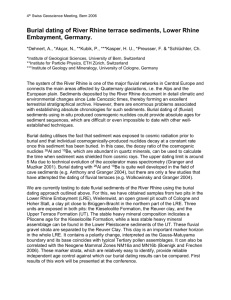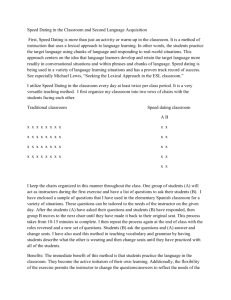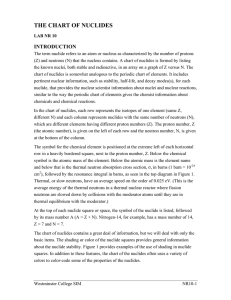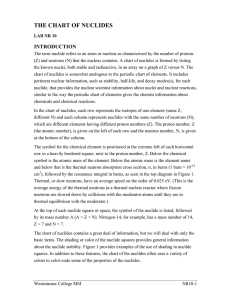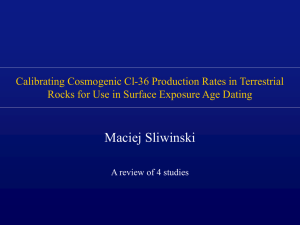Cosmogentic Dating
advertisement
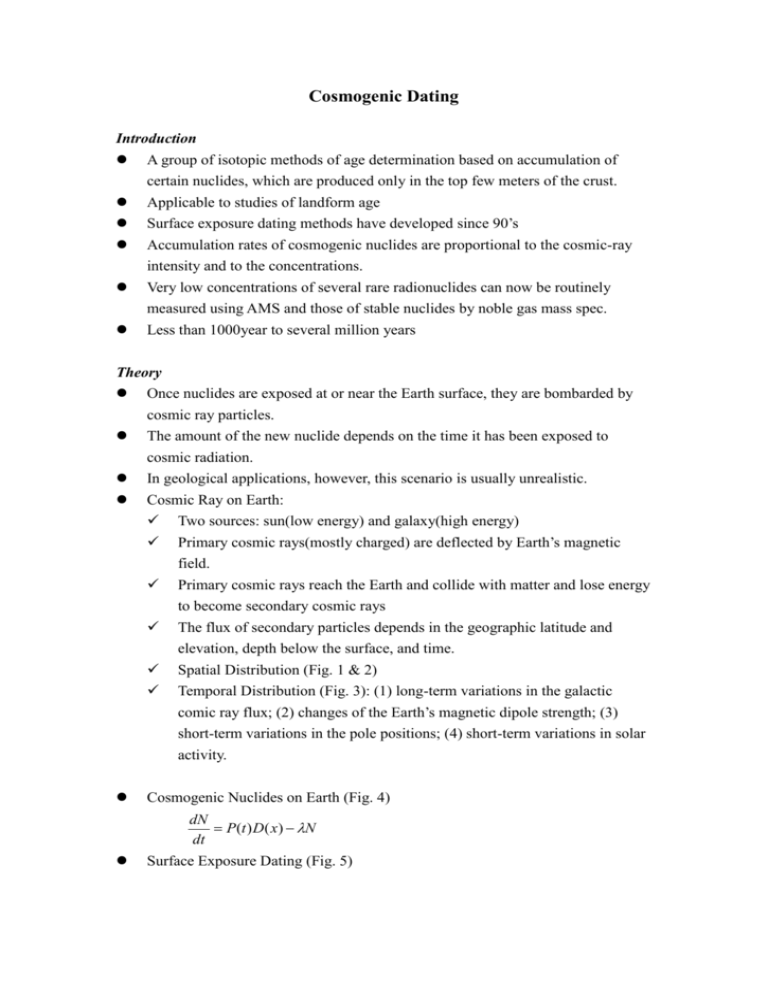
Cosmogenic Dating Introduction A group of isotopic methods of age determination based on accumulation of certain nuclides, which are produced only in the top few meters of the crust. Applicable to studies of landform age Surface exposure dating methods have developed since 90’s Accumulation rates of cosmogenic nuclides are proportional to the cosmic-ray intensity and to the concentrations. Very low concentrations of several rare radionuclides can now be routinely measured using AMS and those of stable nuclides by noble gas mass spec. Less than 1000year to several million years Theory Once nuclides are exposed at or near the Earth surface, they are bombarded by cosmic ray particles. The amount of the new nuclide depends on the time it has been exposed to cosmic radiation. In geological applications, however, this scenario is usually unrealistic. Cosmic Ray on Earth: Two sources: sun(low energy) and galaxy(high energy) Primary cosmic rays(mostly charged) are deflected by Earth’s magnetic field. Primary cosmic rays reach the Earth and collide with matter and lose energy to become secondary cosmic rays The flux of secondary particles depends in the geographic latitude and elevation, depth below the surface, and time. Spatial Distribution (Fig. 1 & 2) Temporal Distribution (Fig. 3): (1) long-term variations in the galactic comic ray flux; (2) changes of the Earth’s magnetic dipole strength; (3) short-term variations in the pole positions; (4) short-term variations in solar activity. Cosmogenic Nuclides on Earth (Fig. 4) dN P (t ) D ( x) N dt Surface Exposure Dating (Fig. 5) Factor Affecting Surface Exposure Ages (1) Temporal Variability of Geomagnetic Field Strength: the higher magnetic field strength leads to lower production rates and vice versa. (2) Erosion: the production rates of cosmogenic nuclides vary with depth below the surface. (3) Shielding: important shielding materials include snow, volcanic ash, dust, sand, and vegetation. (4) Chemical Weathering: gain and lose materials (5) Geometry Changes: rolling and fracturing (6) Elevation Changes: tectonism, sea-level change, isostatic movement Time Range of Applicability Theoretical time ranges are two or three half-lives. Secular equilibrium Geological factors Analytical limits Methodology Sample Collection (1) What rock/mineral type to sample? (2) What surface to sample? (3) How many samples to collect? Laboratory Analysis (1) AMS: 14C, 36Cl, 26Al, 10Be (2) Noble gas mass spec.: 3He, 21Ne Applications (1) development of chronologies of Quaternary glaciations (2) dating of late Quaternary volcanic eruptions (3) dating paleolake shorelines (4) dating a terrestrial impact crater (5) paleoseismology Limitations and Maximum Utility (1) limited availability of sampling sites and/or samples (2) limited knowledge of production rates (3) complex exposure history due to geological factors (4) long and involved sample preparation (5) limited accessibility of analytical equipment Reference Zreda, M.G. and Phillips, F.M. (2000) Cosmogenic nuclide buildup in surficial materials. In “Quaternary Geochronology: Methods and Applications”, eds. J.S. Noller, J.M. Sowers, and W.R. Lettis, AGU shelf 4.





